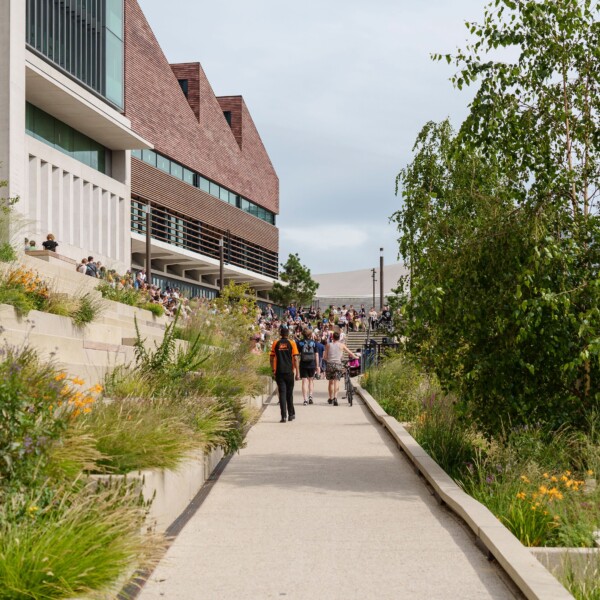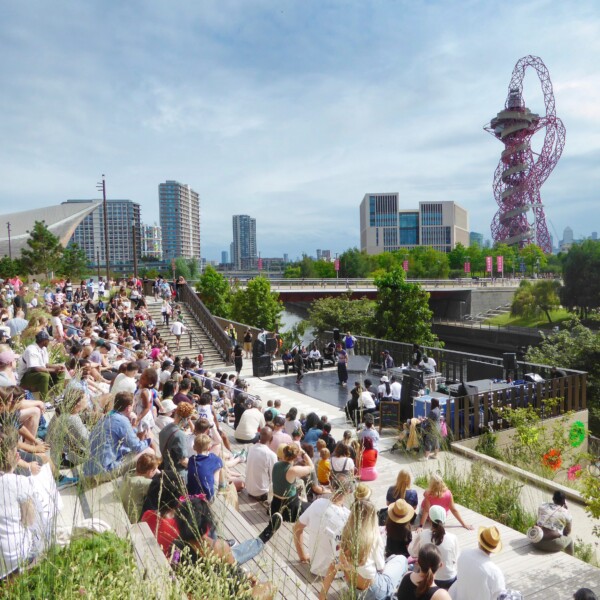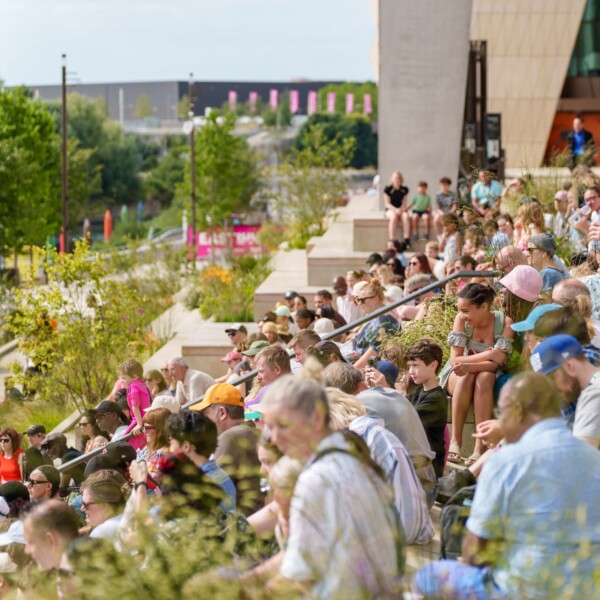Scott’s journey into landscape architecture
Scott Carroll always had an interest in being immersed in nature. Growing up, he also became fascinated with how people interact with one another, and their environments. Sitting at the intersection between these interests, creativity, art, and design – was landscape architecture.
For Scott, landscape design gives people the opportunity to learn about places and worlds that might otherwise be closed. He sees it as a real privilege – one of the special things about the job. There’s never a boring moment. So Scott picked it up and ran with it.
Scott studied at Plymouth School of Architecture before heading to Cheltenham School of Design to study Landscape Architecture. That was 20 years ago. Today, he’s Studio Leader for one of eight studios that make up LDA Design.
How LDA defines landscape design
In its broadest sense, landscape design is about making great places and shaping the world around us for the better. It’s also the synergy between art and science – bringing people and nature together. The projects are the vehicle for making that happen. Scotts feels very lucky to have been involved with some incredible projects in his time at LDA Design.
In 2007, he worked on the ‘People’s Playground’ as part of an international competition to transform Blackpool’s Golden Mile. It included the world’s largest kinetic sculpture. Scott was also involved with Queen Elizabeth Park right from the concept stages, creating the canvas for the 2012 celebrations to take place. It was also about legacy, and LDA Design continues to work on the site alongside Endpoint.
From modelling the park out of clay in the Olympic planning stages, to seeing it grow and evolve more than a decade later, it was a real labour of love. Scott has relished the opportunity to sit around a table with other designers, and see the gardens, landforms, and spaces full of life and still changing and improving. Unlike a building, one of the amazing things about landscape architecture is its inherent capacity for change.

The process of creating great foundations
People from different design disciplines all have a ‘process’. In landscape design, there are multiple aspects to consider. Scott begins with a brief and what the client wants out of the project. That’s because sometimes the brief doesn’t always accurately reflect what the client truly wants. Then it’s a case of looking at the project with fresh eyes and seeing what it has to offer in terms of opportunities for people and nature, circling back and shaping the brief with those ideas – sometimes in the shape of a reverse brief – to ensure the project does everything it needs to do and more.
Co-design has really come to the fore in recent years. It’s about creating designs that allow places that respond to people’s needs and desires. That’s why it's key to the design process to have that input running throughout, but also afterwards as well. In many ways, the project build is just the beginning. What happens after the project is delivered is one of the most important things.
Experience over object
Architects are often seen as the kings and queens of cityscapes, but in reality it's the spaces between those buildings where the public has the most experiences and interactions.
Projects increasingly bring exterior landscapes into interiors, especially in spaces such as terraces, receptions, and roofs. Scott definitely feels that it’s a growing trend, especially in terms of climate crisis, nature recovery, and social equity – emphasising the life between the buildings, and making the most of urban spaces by drawing life into buildings – both people and nature.
LDA Design has been involved with a lot of projects that look at those aspects. It’s challenging and rewarding to create special places, giving recognition to the fact that buildings need to do more than they have done in the past. Measuring the performance of projects against targets for wellness and wellbeing has now become an integral part of LDA Design’s process.
BREEAM Certification is one way of measuring things that are essential to people and nature, including having clean air to breathe and improving physical health. Wellness and well-being are a huge part of that, as evidenced by innovations in biophilic design.
The growing importance of biophilic design
Some of today’s most successful environments are highly biophilic. Biophilic design is a subject close to Scott’s heart. It’s actually something designers have been doing for many years without knowing.
The difference is that now there’s a body of knowledge and academic research that supports our understanding of what makes great places. It’s very much about creating rich, sensory spaces for people, hitting certain performance requirements in terms of that sensory interaction:
- Shaping space in its biggest context, creates a sense of discovery and exploration as people move through, whilst creating spaces with a sense of prospect and refuge.
- Introducing natural content into that space – things that tingle people’s senses, from green structures to birdsong.
- Adding natural references through the use of materials like stone and timber within the environment.

The advantages of collaboration
Landscape projects typically involve large, multidisciplinary teams. They rely on a genuinely collaborative endeavour, which is why it’s so important to get the right team around you. For Scott, it’s key to have people who have the desire to be there and want to work collaboratively. Great relationships are vital.
Collaboration also brings advantages such as creative synergy – making special things happen that wouldn’t have otherwise. For that to happen, people need to be able to listen, keep an open mind, and be willing to change their views. That’s when great things happen – the magic – creating something that is bigger and better than the sum of its parts.
Scott’s take on wayfinding and landscape design
There’s a shared language between wayfinding and landscape design. Right now, lots of wayfinding work is coming from landscape design. For Scott, wayfinding is about people’s understanding of place, and how they move through and between different places. For landscape architects, that’s a pretty fundamental thing to know. The intersection between the two disciplines is when landscape architects come in. – the creation of environments that support natural wayfinding, giving people the ability to navigate almost instinctively. It could be either a new environment or an existing environment that’s being adjusted, but it comes back to biophilic design – you get lost in it, but you feel safe in it. That requires landmarks, spaces, and root systems.
The next layer that supports a wayfinding system is signage. A great example of this is the family of digital signage created by LDA Design and Endpoint at the Olympic Park. These objects have been carefully located in their context within the park. They work in a number of ways – art installations, ecological information, community information, and clocks. They also provide homes for wildlife with integrated insect and bird homes and also provide a vital revenue stream.
The materiality has been considered, with the use of concrete, and imprinted concrete which references the river. Not only is that working as part of a wider wayfinding system, it’s also contributing to place-making and civic generosity. It has an ecological role, and it also has a financial role.

Influences on landscape design and wayfinding
Desire lines are an interesting feature of the natural landscape. The starting point is the shortest distance between two places. But it quickly becomes much more interesting when you consider aspects like the accessibility of a route, safety, lighting, and places to rest. All of these things make somewhere comfortable, attractive, and interesting.
Technology has always influenced landscape architecture and people’s connection with landscapes. Today, social media has a huge part to play in how people engage with a landscape. Apps are also changing how people interact through navigation and accessibility features.
Technology is also a vital tool in the design process itself, and the shift from visual design towards design as layers of information. Technology can help make ever-stronger bridges between concepts and physical reality. But it’s important to balance technology-driven design with the longevity of products for people and nature.
Alongside biophilic design, landscape architects and wayfinding designers must increasingly create sustainable solutions that can handle extreme climate conditions, mitigate carbon impact, provide homes for wildlife, and make urban spaces better and more inclusive for people and nature to coexist in.
To discover more about LDA Design, visit https://www.lda-design.co.uk/



